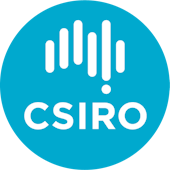
CSIRO

As Australia’s national science agency, CSIRO is solving the greatest challenges through innovative science and technology.
CSIRO - unlocking a better future for everyone.
Links
Displaying 481 - 500 of 744 articles

The latest round of bushfires, which claimed 27 homes in the Adelaide Hills, has once again highlighted the importance of planning for the worst. Mercifully, no human lives were lost, and it will be important…

Milk is a highly nutritious food, and an important source of amino acids and minerals such as phosphorus and calcium, which contributes to bone health. Historically, milk was prone to contamination by…

We know more about the surface of the moon than we do about our deepest oceans, and only 12% of the ocean floor within Australia’s Exclusive Economic Zone has so far been mapped. The reason for this is…

Today’s land birds, from ducks to eagles, shared a common ancestor after dinosaurs went extinct – just one finding from bird gene studies published in journals, including Science and GigaScience, today…

How many times have you been looking for information online, only to find yourself going round and round in circles? Or you’ve spent too long poking around a website trying to find what you need, only…

As climate negotiators meet at the United Nations’ Lima summit, which comes hot on the heels of the landmark US-China climate deal, there is a renewed focus on how the world can move to a lower-emissions…

A nationwide outbreak of foot and mouth disease; an invasion of a devastating wheat disease; our honeybees completely wiped out. These are just three possible disastrous scenarios facing Australia; they’re…

Our world is becoming increasingly urbanised. In 1950, just 30% of the world’s population lived in urban areas. This number is now over 50% and rising. By 2050, two-thirds of the world’s population are…

New technology to tackle biosecurity challenges down the track is one of the five megatrends identified in today’s CSIRO report Australia’s Biosecurity Future: preparing for future biological challenges…

Imagine an environmental crisis caused by a colourless, odourless gas, in minute concentrations, building up in the atmosphere. There is no expert consensus, but in the face of considerable uncertainty…

Occasional erratic bursts southward of the East Australian Current (EAC) are thought to have moderated the weather of south-east Australia this autumn and winter and they continue to introduce tropical…

Picture a device that can produce electricity using nothing but the ambient heat around it. Thanks to research published in the Proceedings of the National Academy of Science today, this scenario is a…

A groundbreaking climate deal between the US and China will put pressure on the international community to broker a global treaty at next year’s United Nations talks, but experts say it still might not…

The time and date of the origin of insects and their pattern of evolution and survival over millions of years is revealed in a new study, published today in Science magazine. Insect relationships have…

The Prime Minister’s Prizes for Science – awarded at Parliament House in Canberra tonight – recognise excellence in science and science teaching. This year, we asked four prizewinners to reflect on their…

Bats are the natural host species for Ebola and a variety of viruses, many of which can be fatal when transmitted to humans. More than 100 viruses have been identified in bats and this number is rising…

Through burning fossil fuels, humans are rapidly driving up levels of carbon dioxide in the atmosphere, which in turn is raising global temperatures. But not all the CO2 released from burning coal, oil…

Human activity is driving sea levels higher. Australia’s seas are likely to rise by around 70 centimetres by 2100 if nothing is done to combat climate change. But 2100 can seem a long way off. At the moment…

Spanish authorities have euthanised the dog of Madrid nurse Teresa Romero Ramos, who contracted Ebola. The 12-year-old dog, Excalibur, was not showing symptoms and was not tested for Ebola. But he lived…

Patients recovering from heart attacks are almost 30% more likely to take part in rehab at home using a new smartphone app compared to those who had to travel to an outpatient clinic or centre. What’s…
